-
Patrizia Bertini started the topic In search for THE definition in the forum
 Serious Play Pro Forum 10 years, 4 months ago
Serious Play Pro Forum 10 years, 4 months agoHello everyone!
The premise: I recently went to a workshop that encouraged people to ask stupid questions. So, I have been starting asking stupid questions and build on them.
So, despite being engaged with the bricks by 5 years already, I have just realised that I could not find THE official definition of LSP.
There are amazing definition out…[Read more]
-
Patrizia Bertini wrote a new post 10 years, 4 months ago
 I recently had the pleasure of facilitating a LEGO SeriousPlay workshop at Hot Source. One of the participant, Marek Pawlowski, shared his experience.
I recently had the pleasure of facilitating a LEGO SeriousPlay workshop at Hot Source. One of the participant, Marek Pawlowski, shared his experience.
As a facilitator, used to describe the method, it was refreshing and an immense pleasure to know that he experienced exactly what I always described when I talk about the power and benefits of LSP. Thank you @Marek for such an amazing post!
Improvement requires change, whether that happens gradually through iteration or in big leaps through sudden sparks of creativity. This is true of improving anything, from companies to individual products. It’s something I think about a lot in the context of the MEX initiative, which is, at its heart, about helping people to improve digital experiences. We are always looking for new ways to equip people to make good changes to the user experience of the products they’re designing.
The difficult part is that ‘improvement’ is very subjective. Realistically, you can only ever hope the changes you make will ‘improve’ things for most of your users. There simply is no such thing as an improvement which is objectively better for everyone.
However, the application of objective processes to achieve a creative result can help increase the chance your subjective improvements will be applicable to the largest possible number of users. This is why we try different techniques at MEX events, from physical exercises – like thinking about how the movements most natural to your body might transpose into digital interfaces – to low-fi, fast-paced model making.
While I’ve organised many of these different facilitations over the years, I was intrigued by the opportunity to be participant for a change, and in an exercise I’d never tried before, using Lego for serious play, facilitated by Patrizia Bertini (@legoviews). It was hosted by UX agency Foolproof (@foolproof_ux) and organised by Hot Source(@hsnorwich), a networking group in Norwich, UK (for our international readers: a small city in the East of the country – the significance of which will become apparent later).
Patrizia’s method is derived from the Lego Serious Play technique and qualification, formalised by Robert Rasmussen – formerly a product development director at Lego, in 2002. The premise is that by occupying participants’ hands with a physical task like assembling Lego blocks, you can help them to think and discuss more creatively about other, often abstract problems. In addition, the Lego itself provides an accessible medium to give physical form to your opinions.
Although the participants did not know this at the start, the purpose of the evening was to identify the challenges facing the creative industry in Norwich and propose a solution. However, Patrizia did not reveal this until the end, and instead focused her efforts on immediately engaging a relatively large group (15 participants, she usually works with 5 – 10).
Everyone sat around a large table, covered in Lego, and she explained a few ground rules: everyone who starts must finish (i.e. you can’t disappear half way through to make a phone call) and if you need to leave for a bathroom or unexpected break the rest of the group will pause and wait for you. Both of these rules emphasised that although we’d be building things as individuals, we were participating in a group challenge.
All of the actual Lego building challenges – from constructing a tower to riffing on what it means to be creative – were very rapid, 4 minutes each at most. This pace forced everyone to create without hesitating and, of course, the results were diverse, but crucially no one felt held back by fear of their medium.
After each round of building, Patrizia would ask each person in turn about their model and – significantly – to answer only with reference to the model itself. In this way, the models became the filters which allowed people to address the questions without bringing their own personal baggage into the group.
It was a neat way of solving one of the biggest problems in time-limited workshops: time wasted by everyone communicating their existing views and personality, usually by a round of ‘Hi, I’m Marek and I do XYZ’ style intros. The whole point of a creative workshop like this is to give people a license to think outside their existing roles, but most start with the standard, tedious round of intros, which only serve to reinforce who you are when you start the workshop rather than who you could be when you come out of it.
Patrizia’s skillful facilitation bypassed this stage, yet everyone around the table still knew more about everyone else’s personality by the end. It also meant participants could stay focused on responding to the specific building challenges she posed.
We went through several rounds of building, breaking down the models each time, until she started to guide us towards more specific questions, like making a representation of the problems facing the creative industries in Norwich. After we’d each explained these challenges, she asked us to keep the models and adjust them to show how we’d solve the problem we’d identified.
The final stage was to come together in a group by each placing a red Lego brick on someone else’s model which we thought represented a good solution and discussing why. Then, working together, we had to agree which elements of the solution we’d contribute to a final proposal – in the form of a Lego model – but only adding items which met with universal agreement.
By this stage, about two hours in, it was obvious a group of relative strangers were able to discuss, collaborate and work through problems because of the way Patrizia’s process had broken down traditional barriers and overcome the usual group dynamics in which a small number dominate the session. It would have been remarkable for this alone – the ability to get everyone meaningfully involved – but also for the way time seemed to fly by, without anyone feeling the need to leave or be distracted by their phone.
So, what of the result itself? After all, however interesting the process, the real test is whether it produced a useful outcome.
It left me with several conclusions:We were discussing Norwich, but you could substitute any number of small, regional cities I’ve visited in the UK, US and Europe: no one is alone in questioning the effectiveness and future of their creative industries.
Communities, of shared practice, and of moral support are at the heart of any industry and nurturing them is always a good starting point (it was interesting to hear Thomas Foster, outgoing head of UX at a large bank saying something similar about communities of practice within large organisations at the March 2014 MEX).
Connections are vital, both in the sense of encouraging individuals to connect with each other to share experiences, and in the physical sense: good links enable the import and export of talent.
Every regional city has one or two large ‘anchor’ clients which dominate the local business scene. This has benefits, but can stifle creativity and hold back expansion. Look outwards and recognise the opportunities in working with a diverse range of smaller clients.
(and yes, burying Alan Partridge was also mooted!)The results did not necessarily break new ground in the content of the answers, but the efficiency with which they were arrived at, while still being sufficiently collaborative that everyone was able to contribute was impressive. The method was also effective for the way it maintained momentum and kept group members interested in what each other were doing. Lego alone did not achieve this – indeed, you could have substituted any number of other materials – it was primarily down to the skill of the facilitator, who maintained an admiral balance of discipline, fun and inquiry.
Patrizia Bertini has also created a series of video interviews with designers and architects, where she uses Lego play as a key part of her interview technique to help the participants open up the discussion. Recommended viewing. -
Marko Rillo wrote a new post 10 years, 4 months ago
Dotti Toellner and Cori Moore Video on Lego Serious Play Facilitation workshop at Lift 2014 conference. They wrote about the event the following.
What happened at Lift14: Well, we sure had some serious fun – it’s amazing what you can do with such energetic and inspiring participants! The fully booked session kicked off with some skill building exercises, teaching our lively liftonians how to (literally) build metaphors, express abstract ideas with 3D models and collaborate through storymaking. Then the real work started as we addressed the question: “What does it take to be a change agent”. (We couldn’t believe how committed these guys were – talk about “flow moments”.) Putting their new skills into action, our lifters experienced rapid action prototyping and shared sense making as they probed and encouraged their fellow team members, drawing out meaning with plenty cheers and laughter!
They also reflected upon their experience at their blog and at their company website.
Doerte ‘Dotti’ Toellner is co-founder and managing director of Point-Blank International. In nearly two decades as a qualitative researcher, design thinker and change agent she has founded two companies and travelled the world on the behalf of ‘her’ brands. Catching sparks and crafting new ways of looking, thinking & doing keeps her inspired and passionate – in research, design, innovation & life in general. Make sure you set aside some time to chat with her about her hobby horses, such as 5 senses research, haptic think and the role of magic in the qualitative approach!
Cori Moore is stationed at Point-Blank’s idea workbench and communication hub, better known as Spark & Craft. A multitasking octopus, she devotes her time to running workshops, attending conferences and events, writing blogs & articles, tweeting, occasionally doodling and bringing new sparks of inspiration & people into the company. A cultural sponge, with a passion for trying new things, her bag of tricks incorporates her experience in the diverse fields of research, communication, event management & mixology – she can make a mean cocktail if you ask her nicely.
-
Marko Rillo wrote a new post 10 years, 4 months ago
The following post on how Lego Serious Play is not just a game was written by the Liquid Agency Chief Creative Officer Alfredo Muccino
Lego Serious Play is a hands-on, experiential process designed to
-
Marko Rillo wrote a new post 10 years, 4 months ago
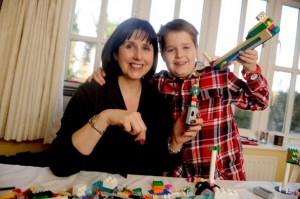 An interesting post from Get West London about the use of Lego Serious Play in therapy
An interesting post from Get West London about the use of Lego Serious Play in therapyA Harefield woman is among a new breed of therapists encouraging grown men and women to stop working and start playing –
-
Marko Rillo wrote a new post 10 years, 4 months ago
I found this 2 year old post about Lego Serious Play by Agile Partnership consultant Ellen Grove from her blog. There is also a great team facilitation case study that includes an interesting responsibility game –
-
Marko Rillo wrote a new post 10 years, 4 months ago
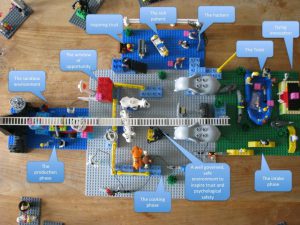 LEGO Serious Play Transcript by Massimo Mercuri
LEGO Serious Play Transcript by Massimo MercuriLego Serious Play facilitator and our community member Massimo Mercuri has published an interesting post on LSP Facebook group showing how he has transcribed the models that they have built. It is an interesting concept and can add useful perspective to the client. Probably a good idea to report back upon the LSP session. Look at the two pictures closely. Have you done something similar – what do you think of his approach?
-
Marko Rillo wrote a new post 10 years, 5 months ago
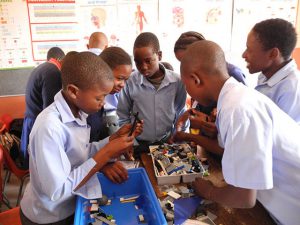 Schoolkids playing with legos. From: fastcoexist.com
Schoolkids playing with legos. From: fastcoexist.comFast Co Exist has published this article about the linkages between Lego and creativity.
By: Jessica Leber
Creativity is in decline around the world. But a new school built by the toy block company that focuses on play might unlock the secret to a solution.
If successful companies and societies of this next century are defined by their ability to innovate–a trope repeated constantly in business seminars, surveys, and speeches–then the U.S. may be headed for a rough time: On average, Americans’ ability to think creatively has declined.
This trend has been called “the creativity crisis,” and was defined by a major study in 2011. Researchers looked at a common measure of creativity in 300,000 kids and adults over time and found that, unlike IQ scores, creativity had been declining since 1990. The effect was most marked in elementary-school-age kids.
Why exactly creativity measures are declining is still anyone’s guess, although evidence and intuition points to the growing emphasis on testing in education as a factor. Kids are taught to learn by understanding “the one right answer” they need to find, and what they need to do to find it. (On tests of how kids do at brainstorming ideas, 98% of three-year-olds register as “creative geniuses.” By the time they are 25? Only 2%).
“There’s an immense and growing pressure to be able to standardize approaches in the school to ensure quality. And this is an interesting contradiction, because standardization never leads to quality when we talk about learning. We’re not producing products. We’re trying to educate children,” says Randa Grob-Zakhary, CEO of the Lego Foundation.
The foundation, endowed by the Lego Group, is now focused on revamping education systems to try to shift this dynamic at all ages–mainly by incorporating structured, hands-on “play” that fosters creative thinking. “A lot of work is focused on how can we better teach and more quickly teach reading and math–literacy and numeracy,” she says, speaking with Co.Exist at the United Nations’ Global Compact summit in New York City last month. “There’s still a very big gap in defining how can we better equip our children with creative and critical thinking skills to equip them to face tomorrow’s challenges.”
Last month, the Lego Foundation opened its own international school in Billund, near the company’s headquarters in Denmark, where the foundation will attempt to rigorously test and measure some of these ideas by incorporating “hands-on learning” into the curriculum wherever possible–with Lego bricks, but also with other toys, building materials and even robotics technologies. The school will build on the work of the foundation’s existing projects around the world. One, in South Africa, is where today 40,000 kids in grades K to 12 at 25 schools are working with a curriculum that includes play. Anecdotal evidence from this project shows that tests scores have gone up and teacher turnover has been “transformed,” says Grob-Zakhary, though no rigorous studies have been done.
She envisions a key role for the foundation in building a network that moves educational and psychological research on the topic of play and creativity out of academic journals and into the hands of teachers and policymakers. She is also looking to attract buy-in from the business world, which often invests in workforce training in college programs but rarely focuses on early childhood.
She believes that businesses need to start taking a longer-term view. “If we don’t start in those first five years, we have much less possibility to create that workforce we need. And yet very few businesses who would benefit from that kind of agility and adaptiveness built in the early years actually invest in it. It’s a really significant issue.”
-
Marko Rillo wrote a new post 10 years, 5 months ago
Sjra Puts has produced an exciting action trailer about Lego Serious Play in progress. Enjoy! :-)
-
Marko Rillo wrote a new post 10 years, 5 months ago
31Volts is a young and experienced service design agency based in the Netherlands who work in the overlap of business and creativity. They have recently posted a video of one of their Lego Serious Play sessions to Vimeo
-
Marko Rillo wrote a new post 10 years, 5 months ago
Students’ Union of the University of the Arts London published a short case on Managing Stuckness with Lego Serious Play
So, apparently Lego Serious Play (LSP) is an actual thing. I signed up to this
-
Marko Rillo wrote a new post 10 years, 5 months ago
Catherine Ryan, who calls herself “High Priestess of Human Experience Design at hEx Studios” has produced a visually entertaining and interesting slideshare where she presents co-creation coupled with the Lego Serious Play methodology.
-
Marko Rillo wrote a new post 10 years, 5 months ago
LSP Bricks Available Online
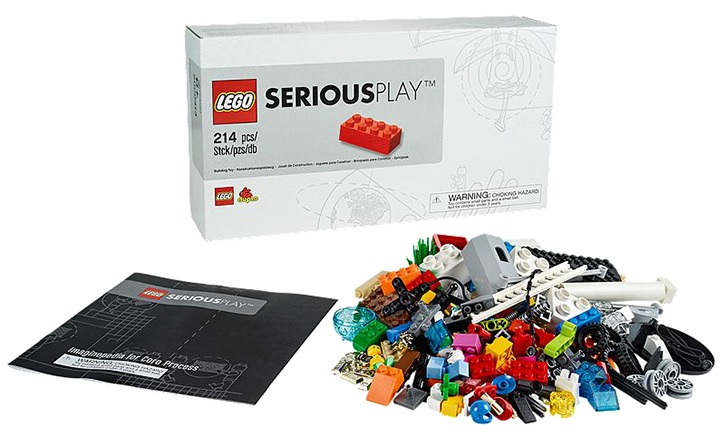 Now you can directly order all four LEGO SERIOUS PLAY kits directly via LEGO Online Shop: – Lego Serious Play Set of 100 Exploration Bags (2000409) –
Now you can directly order all four LEGO SERIOUS PLAY kits directly via LEGO Online Shop: – Lego Serious Play Set of 100 Exploration Bags (2000409) – -
Patrizia Bertini wrote a new post 10 years, 5 months ago
-
Marko Rillo wrote a new post 10 years, 5 months ago
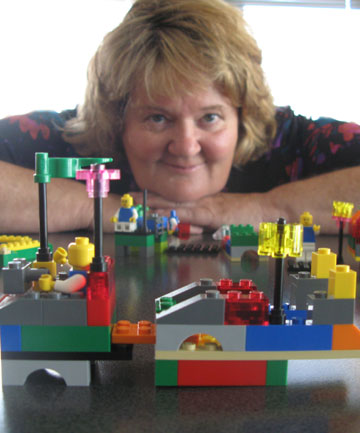 Central Otago WasteBusters manager Glenys Byrne gets adults to use their imagination with Lego Serious Play.
Central Otago WasteBusters manager Glenys Byrne gets adults to use their imagination with Lego Serious Play.JO MCKENZIE-MCLEAN
A Central Otago waste manger is proving lego isn’t just for children. Glenys Byrne, general manager of Central Otago WasteBusters, held a Lego Serious Play (LSP) workshop earlier this month with a group of people from WasteBusters and the Central Otago District Council, including councillor Clair Higginson and Bernie Scurr from health and safety.
Byrne said she was one of only a few facilitators nationwide trained to hold the LSP workshop, which was designed to enhance business performance through building with lego bricks. LSP had been used by organisations such as Nasa and Coca-Cola, she said.
“The bricks allow people to think freely, and express themselves as they create, the process is not reliant on the typical verbal jousting that goes on in meetings, or filling up a blank page, instead, participants use a carefully chosen selection of bricks and a unique process where people ‘think through their fingers’ – unleashing insight, inspiration and imagination.”
There was a bit of head-scratching around the table when the group was asked to create something out of lego bricks to reflect a sustainable future in Central Otago. However, with only five minutes to complete the task, the participants quickly starting building wind turbines, vegetable gardens, electric cars, solar-powered homes and wind operated irrigation systems.
Higginson said the workshop was insightful and challenged them to use their own creativity, work in pairs and then share their visions as a group: “I found the hands-on part of it helped get over anxieties we may have had in speaking up in the group.” Scurr said the exercise reinforced how different everyone was and how differently everyone thought.
Source: http://www.stuff.co.nz/southland-times/news/9969808/Councillors-get-serious-about-building-blocks
-
Marko Rillo wrote a new post 10 years, 6 months ago
Reinhard Ematinger has published an interesting radio interview about Lego Serious Play on Vimeo
-
Marko Rillo wrote a new post 10 years, 6 months ago
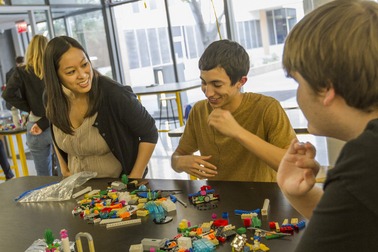 Engineering professor Candace Chan, a nanoscientist, checks in with undergraduate students Ruben Hernandez (aeronautics major) and Dylan Baker (mechanical engineering major) as they work on their LEGO models
Engineering professor Candace Chan, a nanoscientist, checks in with undergraduate students Ruben Hernandez (aeronautics major) and Dylan Baker (mechanical engineering major) as they work on their LEGO modelsFrom: (Nanowerk News) Students at Arizona State University are learning how to play.
ASU undergraduates have the opportunity to enroll in a challenging course this fall, designed to re-introduce the act of play as a problem-solving technique. The course is offered as part of the larger project, Cross-disciplinary Education in Social and Ethical Aspects of Nanotechnology, which received nearly $200,000 from the National Science Foundation’s Nano Undergraduate Education program.
Engineering professor Candace Chan, a nanoscientist, checks in with undergraduate students Ruben Hernandez (aeronautics major) and Dylan Baker (mechanical engineering major) as they work on their LEGO models during a Feb. 24 pilot workshop.
The project is the brainchild of Camilla Nørgaard Jensen, a doctoral scholar in the ASU Herberger Institute’s design, environment and the arts doctoral program. Participants will use an approach called LEGO Serious Play to solve what Jensen calls “nano-conundrums” – ethical dilemmas arising in the field of nanotechnology.
“LEGO Serious Play is an engaging vehicle that helps to create a level playing field, fostering shared conversation and exchange of multiple perspectives,” said Jensen, a trained LEGO Serious Play facilitator. “This creates an environment for reflection and critical deliberation of complex decisions and their future impacts.”
LEGO Serious Play methods are often used by businesses to strategize and encourage creative thinking. In ASU’s project, students will use LEGO bricks to build metaphorical models, share and discuss their creations, and then adapt and respond to feedback received by other students. The expectation is that this activity will help students learn to think and communicate “outside the box” – literally and figuratively – about their work and its long-term societal effects.
Jensen works with a team of faculty members, including Thomas Seager, an associate professor and Lincoln Fellow of Ethics and Sustainability in the School of Sustainable Engineering and the Built Environment, one of ASU’s Ira A. Fulton Schools of Engineering; Cynthia Selin, an assistant professor in the School of Sustainability and the Center for Nanotechnology in Society, housed at the Consortium for Science, Policy and Outcomes at ASU; and Mark Hannah, an assistant professor in the rhetoric and composition program in the ASU Department of English, College of Liberal Arts and Sciences.
Fifteen engineering students enrolled in the Grand Challenge Scholar Program participated in a Feb. 24 pilot workshop to test project strategies. Comments from students included, “I experienced my ideas coming to life as I built the model,” and “I gained a perspective as to how ideas cannot take place entirely in the head.” These anecdotal outcomes confirmed the team’s assumptions that play and physical activity can enhance the formation and communication of ideas.
“Technology is a creative and collaborative process,” said Seager, who is principal investigator for the grant. “I want a classroom that will unlock technology creativity, in which students from every discipline can be creative. For me, overcoming obstacles to communication is just the first step.”
Seager’s work teaching ethical reasoning skills to science and engineering graduate students will help inform the project. Selin’s research on the social implications of new technologies, and Hannah’s expertise in professional and technical communication will facilitate the dialogue-based approach to understanding the communication responsibilities of transdisciplinary teams working in nanotechnology. A steering committee of 12 senior advisers is helping to guide the project’s progress.
“Being a new scientific field that involves very complex trade-offs and risk when it comes to implementation, the subject of ethics in nanoscience is best addressed in a transdisciplinary setting. When problems are too complex to be solved by one discipline alone, the approach needs to go beyond the disciplinary silos,” said Jensen.
The ASU project will leverage LEGO Serious Play’s promised “systematic creativity” in an immersive nanotechnology environment, which the team believes is a natural fit because of its micro-to-macro scale and its hands-on approach to experiential learning and deliberation.
“As we train the next generation of students to understand the opportunities and responsibilities involved in creating and using emerging technologies that have the potential to benefit society, we need to advance our capacity to teach diverse stakeholders how to communicate effectively,” said Jensen.
Source: Arizona State University
-
Marko Rillo wrote a new post 10 years, 7 months ago
From Pete Roessler’s blog
For the third time in a row I had the pleasure to participate at Play 4 Agile (Un-)Conference at Rückersbach. Three years ago Play 4 Agile 2012 was my first experience with Open Space
-
Per Kristiansen wrote a new post 10 years, 8 months ago
Enjoy this interview with the CEO of LEGO Foundation Randa Grob-Zakhary.
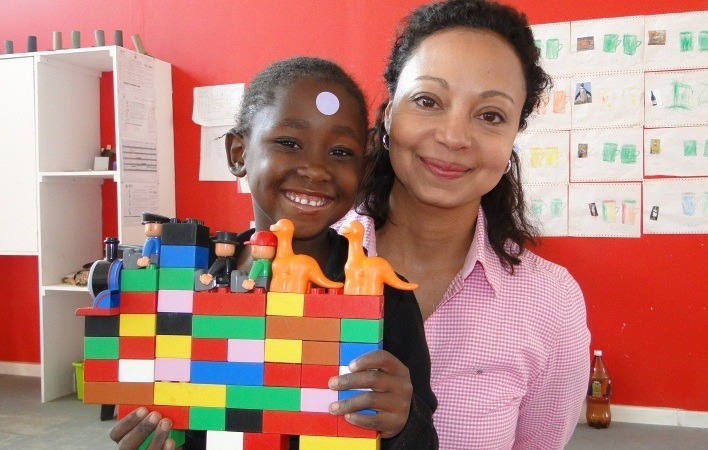
-
Robert Rasmussen commented on the post, Lego Serious Play Kits at Lego Online Shop 10 years, 10 months ago
Some of you might by now have bought the long awaited Connections Kit that has been out of stock for a LONG time. When I received mine I was also curious to see, how much it would differ from the previous one. I
- Load More
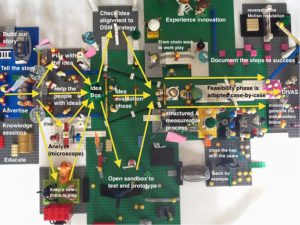

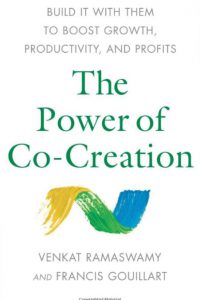

 Become a LEGO Serious Play facilitator - check one of the upcoming training events!
Become a LEGO Serious Play facilitator - check one of the upcoming training events!
This is quite cool!
I usually let people make a video movie with one person explaining the shared model, but this looks quite cool as well.